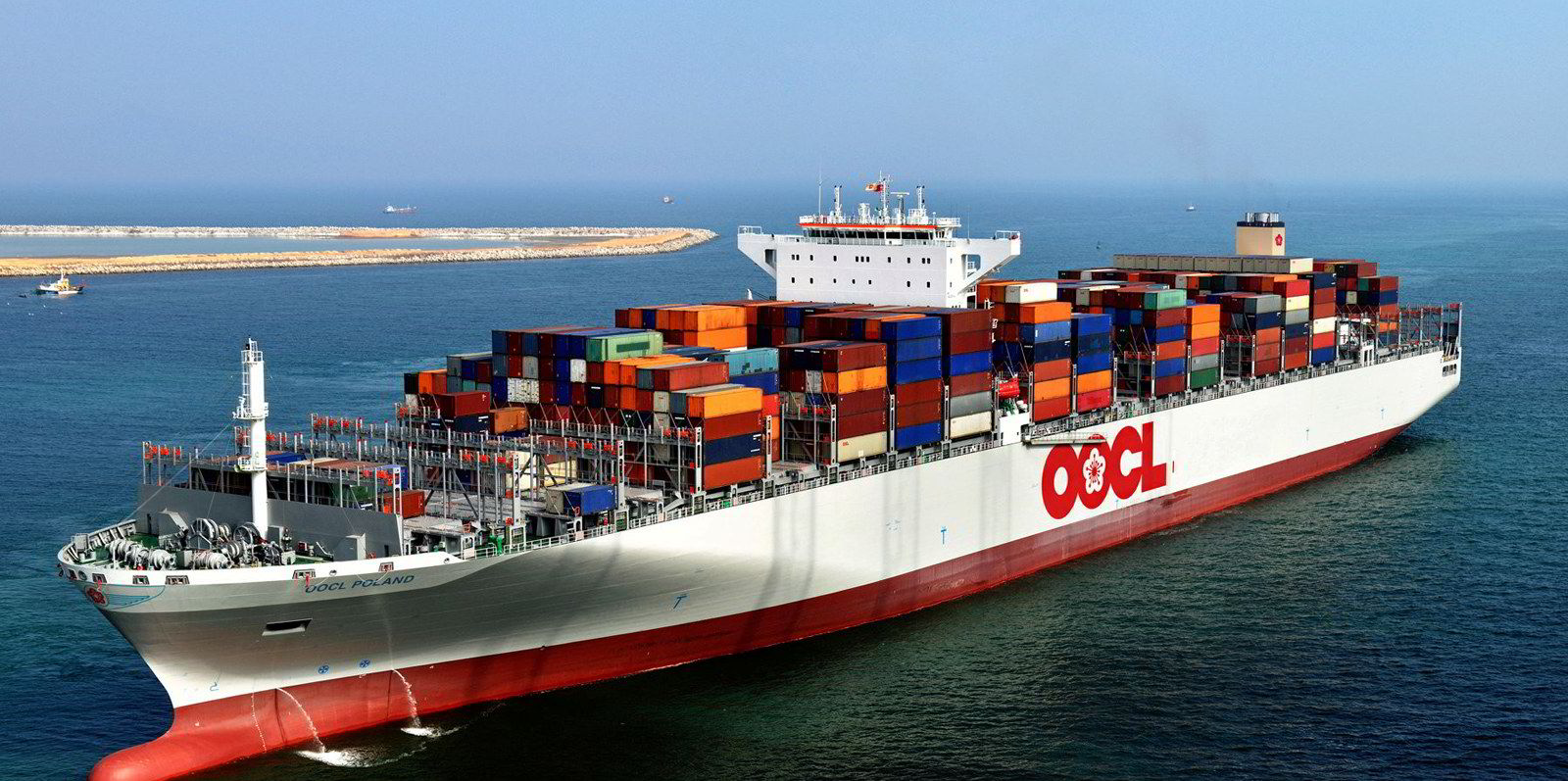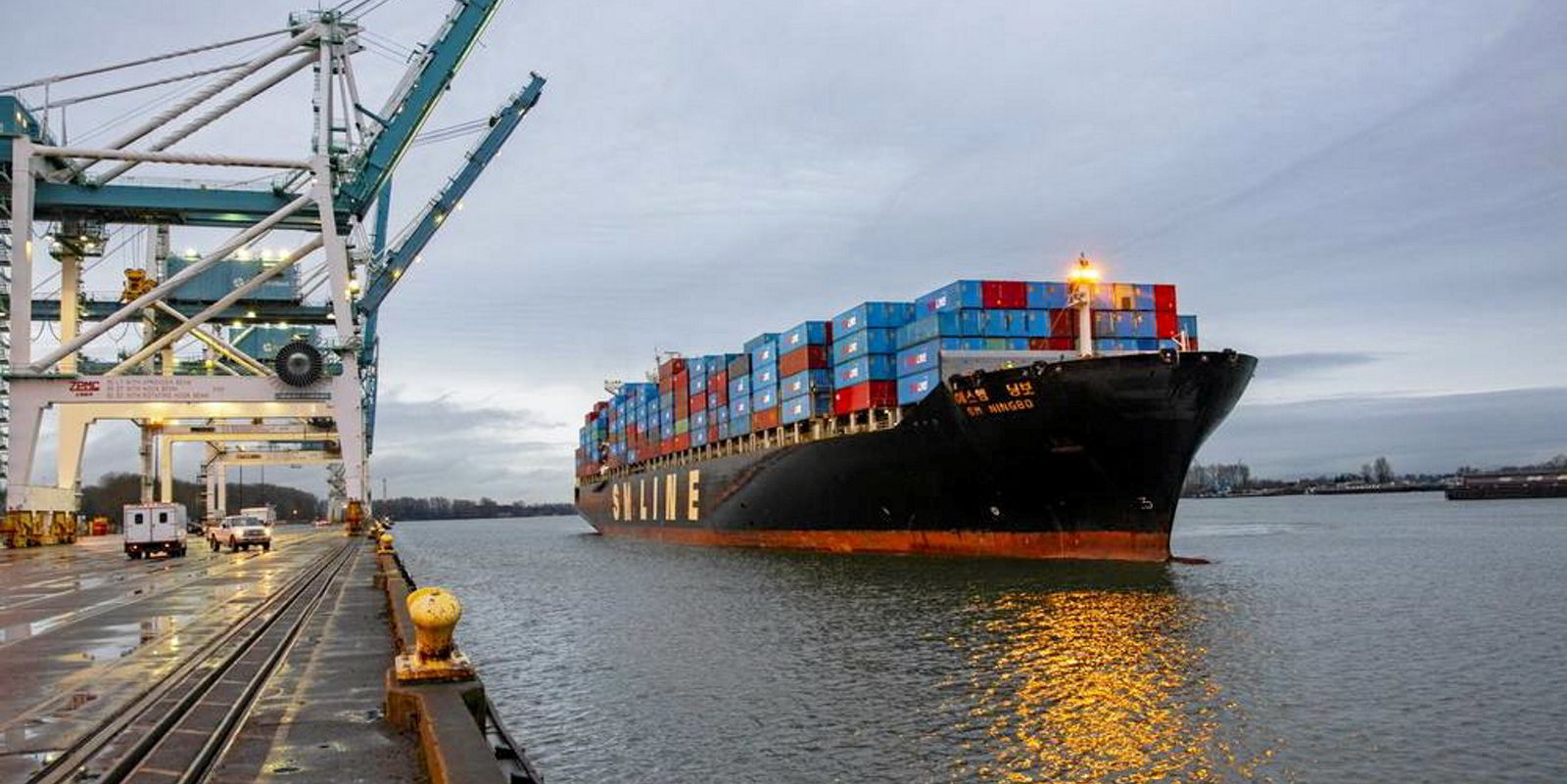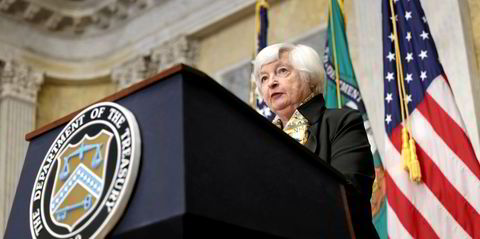Efforts by container operators to place a cap on freight rates are having little impact as US demand remains strong and transpacific rates continue to climb.
Freight rates from Asia to the US East Coast (USEC) rose 5% to $22,186 per 40-foot equivalent unit (feu) on Wednesday, up a hefty $1,059 from a day earlier, according to the Freightos Baltic Index (FBX).
The rise came despite efforts of European liner operators CMA CGM and Hapag-Lloyd to freeze any further freight rate increases.
Liner operators have reacted to sky-high transpacific rates by transferring capacity from less lucrative trades.
A sizeable chunk of the additional capacity has come from the transatlantic, where rates are up 16% so far this month, according to Freightos, a digital freight marketplace.
"Carriers are moving things from secondary lanes to the transpacific, complicating things for shippers on those lower-profile routes," said Freightos head of research Judah Levine.
Another route where capacity is syphoned-off is the Asia-Middle East trade where there are about 40% fewer ships than originally scheduled, according to Alphaliner.
Carriers have been forced to blank almost half of all sailing on the route due to a lack of tonnage and vessel delays, the consultancy added.
Vessels can no longer complete the scheduled voyage in seven weeks due to port congestion and long waiting times at anchorage.
The seepage of tonnage out of the Asia-Middle East trade saw the redeployment this month of 13,208-teu OOCL Egypt (built 2013) to the transpacific, according to Alphaliner.
The OOCL vessel has been shifted from the Ocean Alliance MEA3 service to a seasonal transpacific service operated jointly with sister carrier Cosco Shipping Lines.
Peak congestion
The increase in container shipping capacity in the transpacific will do little to alleviate congestion on the US west coast.
Rates on the trade were also higher rising by $332 in one day to $19,182 per feu on Wednesday.
That is slightly down on the plateau of over $20,000 per day earlier in September.
The number of ships waiting at the US ports of Los Angeles and Long Beach hit a new record high.
More than 70 ships were waiting an average of nine days, despite efforts by ports to extend working hours, according to Freightos.
Figures show the ports of Los Angeles and Long Beach reported a 41% increase in throughput in the first half of the year, compared the same period of 2020, according to Alphaliner.
The ports of New York and New Jersey recorded year-on-year throughput growth of 31%.






